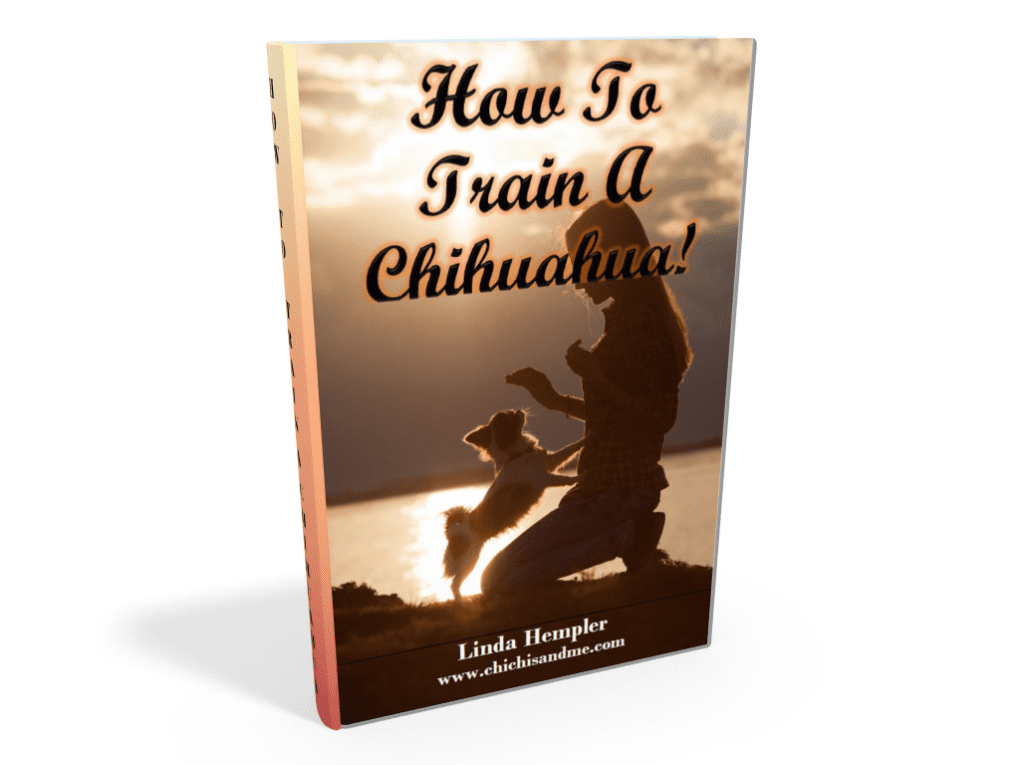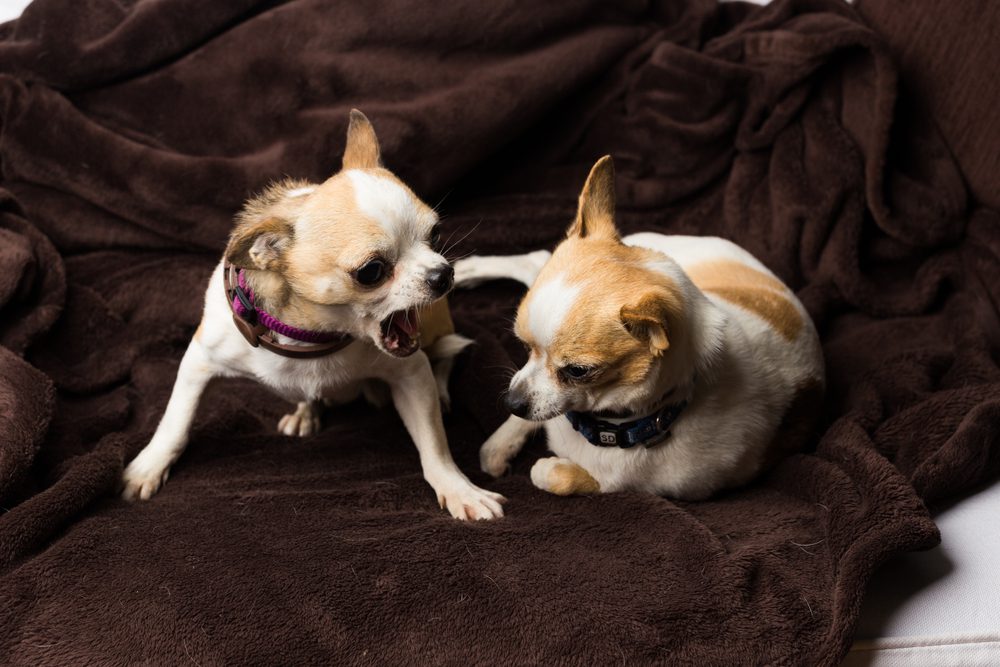Is Your Dog Trying To Dominate You?
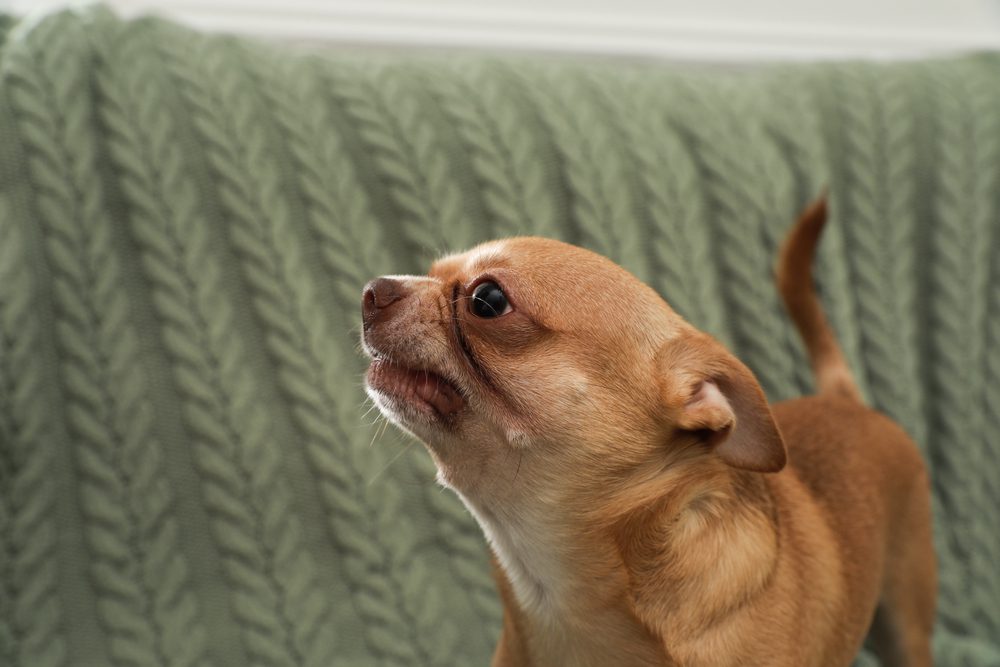
“My Chihuahua is King/Queen of our house!” Or, “My Chihuahua is the boss around here!” Have you heard or said either of these things? There are trainers that promote the “You have to show them who’s boss!” training method, also known as the dominance training method. Is this still a good training method or is dominance and “alpha dog” just a myth? Let’s find out, shall we?
Where Did The Idea That Dogs Fight Over Dominance Come From?
This approach to canine behavior known as the dominance theory began in the 1930s and 1940s. A Swiss animal behaviorist, Rudolph Schenkel first put forth this theory after observing captive wolves in a zoo. He concluded that wolves in a pack fight to gain dominance and the winner is the alpha wolf or leader of the pack.
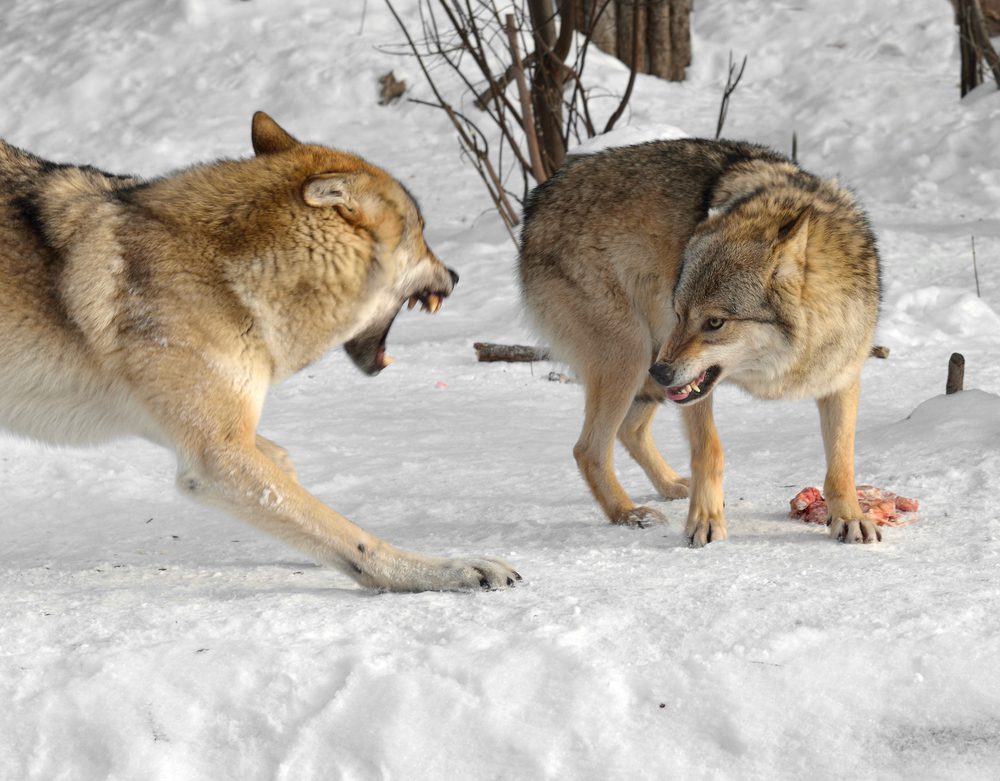
His theory was first applied to wild wolves and then to the domestic dog. It was theorized that wolves and therefore domestic dogs were in constant competition for higher rank in the hierarchy of the pack and only the aggressive actions of the alpha male and female held back others that were vying for the position.
Is This Theory Sound Or is The Alpha Dog a Myth?
So, is this theory sound? No! Rudolph Schenkel is now known as “the man who cried alpha“. Rudolph’s studies took place when very little information was known about the structure of the wolf pack and how wolves behaved in the wild.
Beginning in the 1960s other scientists have since debunked the whole theory of the “alpha wolf” thus the “alpha dog”.
The Truth About The Structure of The Wolf Pack
Scientists since Rudolph Schenkel have come to realize that the way wolves form and maintain packs is different than originally thought. They have debunked the alpha dog myth. This is how it actually works:
Wolves live in packs. These packs are usually related by close blood ties or family units. Everyone in the pack has his or her place within the pack. However, there is a hierarchical order within the pack, and there is never a fight or dispute as to who is at the top of the hierarchy.
A male and female are the mom and dad or the leaders, just like in a human family. They are called the “breeding pair”. These were formerly called the alpha male and alpha female. There is no fighting within the pack as to who is or isn’t the male and female leader of the pack. Just like there is no fighting within a human family as to who is in charge.
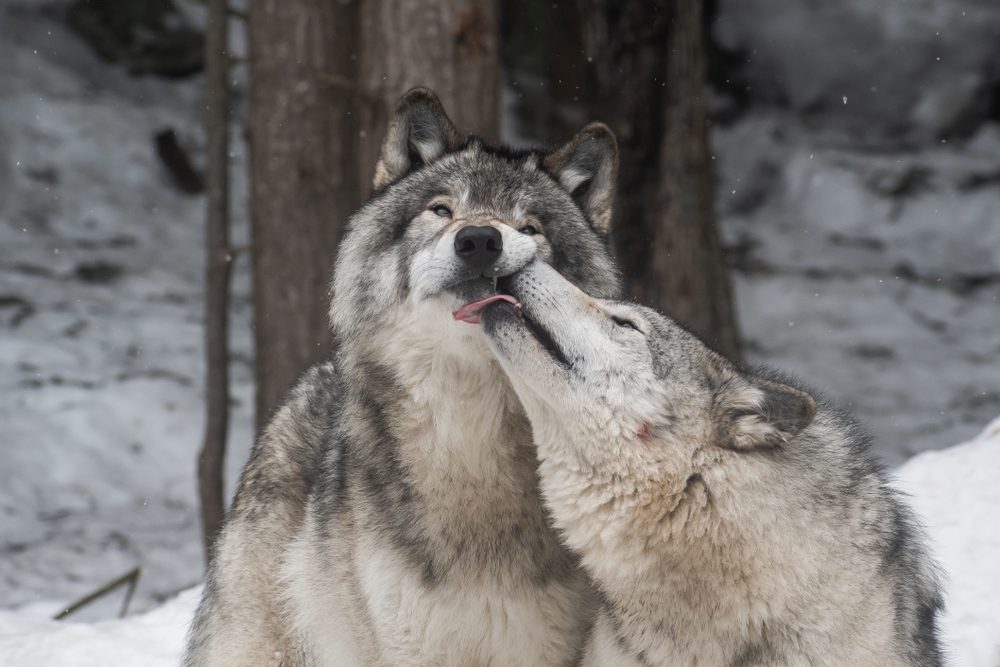
These two (the mom and dad) will mate and produce pups. The entire pack takes part in the raising and training of the young. Four pups are the average size of a litter of wolf pups.
When these pups reach sexual maturity as adolescents some will leave their home territory and search for a mate to establish their own packs. You are probably familiar with the lone wolf howl, even if only on nature shows. This lonely howl is to hopefully attract a mate. Once a mate is found, they will find their own territory and start a family of their own. However, some of the pups remain in the pack for life.
In other words, a wolf pack is much like a human family. There is no fighting over who is or isn’t the alpha dog or the leader within the pack. The alpha dog theory is simply a myth. Likewise, you, as the caregiver of your Chihuahua provide them everything they need, just like the male and female breeding pair in a pack. Therefore, they look to you as the leader of the pack, with no dispute over the fact.
Are Wolves Territorial?
Once upon a time, before man intervened and encroached on the wolves’ territories, they roamed throughout the Northern Hemisphere. Wolves were found occupying every habitat except tropical rainforest and dry deserts.
They will defend their territory against any trespassing wolves. Just like humans will defend their home and family. Usually, all it takes is growling and the baring of teeth. Sometimes they will chase the intruder off and it is only in extreme situations that it may result in physical fighting. Boundaries of territories often overlap and rather than fighting over the boundaries, separate packs will generally just avoid each other.
Normally the territory that belongs to a pack of wolves will remain theirs for many generations. The younger wolves will often “inherit” the territories that belonged to their elders.
Expanding territories or the amount of territory available to each pack depends on the land that is available to them and the availability of food sources. There are some species of wolves that will migrate and follow prey. As a pack increases in size, they may split and some members will form their own territories.
Why Does This Erronous Idea Persist?
Since then scientists and animal behaviorists have been trying to change and correct the view of the alpha dog. But, that erroneous idea continues today. Some trainers still use the outdated dominance methods with the alpha dog view in training dogs.
All you have to do is turn on the TV or look at the internet and you will find this concept continuing to be promoted as “truth” over and over again.
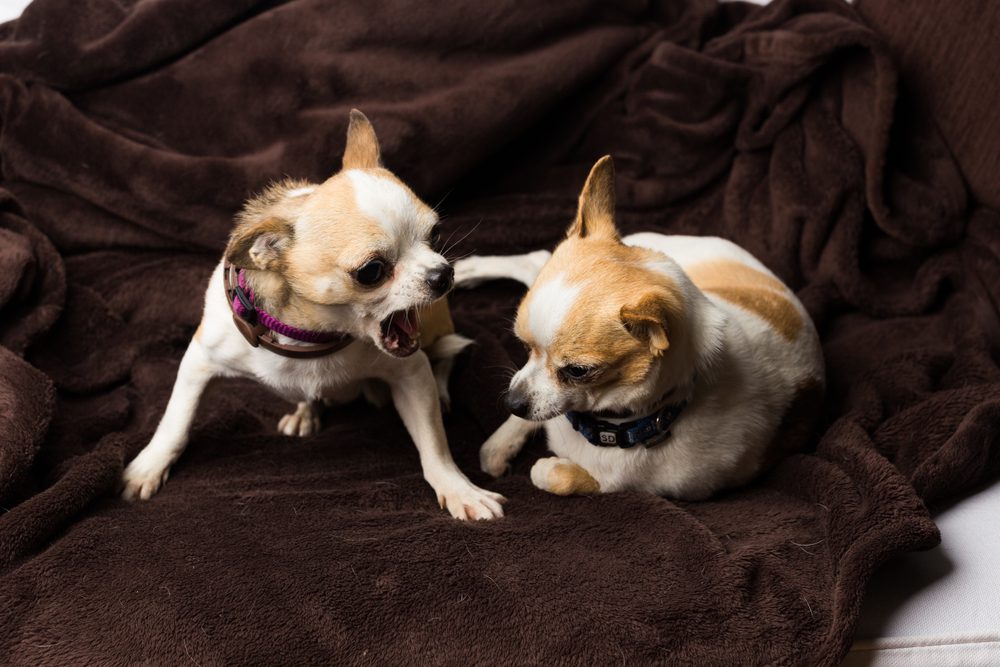
The problem is that this theory is just wrong. It has been disproven over and over again. It is nothing more than pop psychology based on false science. Why does it continue? Because it is an easy concept for people to grasp even though it has been totally disproven. It is easy for people to buy into it because it is repeated so often. But what is the danger? It is people’s dogs and their relationship with their dogs that suffer.
Popular And Well-Known Trainers Still Promote The Idea
Some very popular and well-known trainers continue to promote this theory as truth over television and the internet. Since they are popular and well known even by celebrities then they have to be right, right? Nope, they may know this is incorrect and some have tried to “soften” their approach, however, let’s face it, they are motivated by money. Theirs is a business, a very lucrative business, I might add.
Of course, there are some that continue to teach and promote this erroneous training method simply because they themselves were taught this way and have not done any research to find out if it is sound or the current proven method of training a dog.
Multiple Chihuahuas In The Household
So, do you have more than one Chihuahua? Do they fight? Does one seem to dominate the others? Let me tell you a personal story. If you follow my blog then you know that I had three Chihuahuas in 2020. Chico, Pebbles, and Remedy Jane. Then in July 2020, we lost our beloved 17-year-old Chico. In September of 2020, we then adopted a rescued Chihuahua, Cora and again we had three.
In December of 2020, we adopted another rescued Chihuahua, Winston, and then we had four. Sadly though, on August 30, 2021, we lost our precious Pebbles who was 15 and had battled heart disease for many years. We were back to having three again, Winston, Cora, and Remedy.
Our Story
After we adopted Cora all was pretty peaceful ….. until it wasn’t. After Cora came to live with us everything was rainbows and lollipops for a few months. Then one evening Remedy and Cora were in the backyard and seemingly out of nowhere Remedy — my sweet, not a mean bone in her body — Remedy attacked Cora. It sounded very vicious and scary! I ran out separated them and checked Cora over. She was bleeding, but it was a very shallow wound. Meaning that Remedy had no intentions of really harming her or she could have done a lot more damage because she is bigger than Cora.
I passed this off at the time as a one-time incident. My mistake. It happened in the house a few times after that however there was never any blood at all. What would you do in this case? Would you have punished Remedy? Would you have kept them in separate rooms from that point on?
It is a difficult issue and one that needed to be resolved immediately. But, the question is, was Remedy trying to dominate Cora to let her know that she was the alpha dog in the house? That is what everyone … I mean everyone that I told this to said. Friends, one of which is a long-time dog trainer in our area. Even one of the veterinarians that we have been to. That is how prevalent this outdated theory still is.
Resource Guarding
The answer is no! Remedy was not trying to show Cora who is boss. She was resource guarding. What does that mean? Anything that Remedy views as a valued resource of hers are off-limits to any other dog, at least in her mind. For instance, in the backyard the first time it happened, they both went after something that was very appealing to them both at the same time. Remedy simply felt that it was hers, so she let Cora know that it was hers and for Cora to back off. However, Cora didn’t take heed to the warning, so Remedy resorted to aggression.
Cora learned a valuable lesson. If Remedy sees it first, it is hers and not to try to challenge her for it. Lesson learned! So, our pet Chihuahuas can also “defend” their territory, just like wolves. But, what they perceive as their “territory” isn’t always just their yard or surroundings.
Determining The Cause
Some domesticated dogs that live in human “packs” will guard their valuable resources. What do dogs consider a resource? Some may be:
- Food
- Toys
- Beds
- Furniture (chair, sofa, bed)
- Their owner
Yes, though they may love you very much, they consider you as a resource. You are their protector, their source of food, love, and affection. You are very valuable to them. Not all dogs will guard their resources. They have learned to share these things.
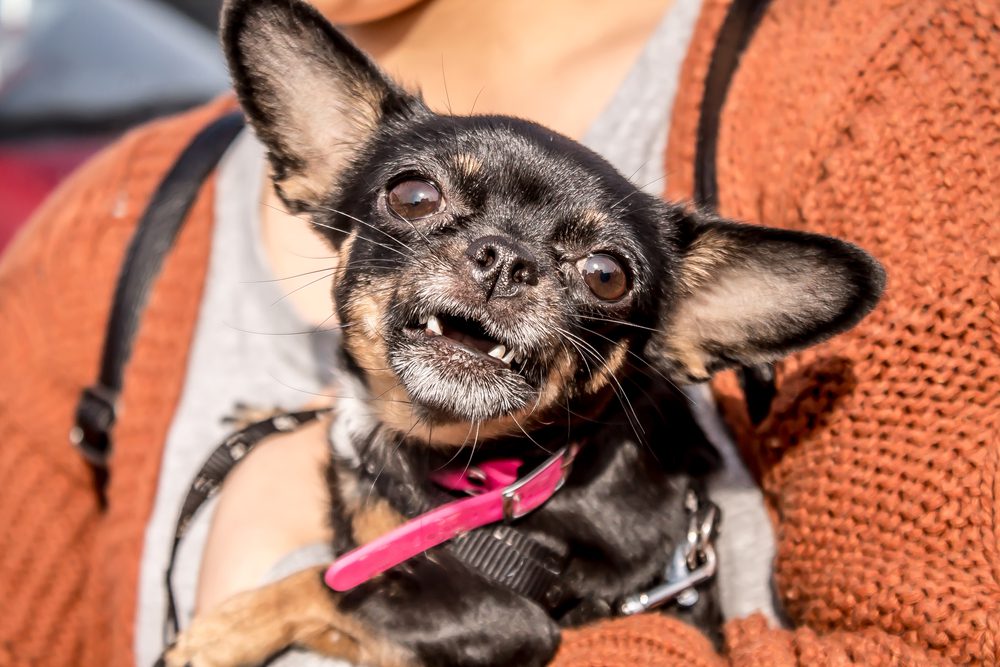
After much observation and yes, keeping them separated until I had it figured out, I realized that it was not food, toys, beds, or anything else that Remedy was guarding. Except for the one instance in the backyard. It was me! Remedy and Cora play together, share toys and never fight over food. However, if I was showing affection to Remedy and Cora came close, she would growl at Cora. She is essentially telling Cora to back off, that she considers me hers.
So, in conclusion, when a household dog is aggressive with another in the house, it is not dominance he or she is seeking, it’s protecting what she or he considers to be a precious resource that they are protecting.
Solving The Problem
So, what can you do once you figure out what they consider a precious resource? Training. Positive training. We work on it every day.
The good news is that most dogs will gauge whether the resource is valuable enough to fight over. Most dogs will use body language and will vocalize to tell the other dog that this particular resource is theirs and for them to back off and go away. I have seen this happen a few times with what Remedy considers a “special” treat. Although she and Cora do not fight over treats in general, she does have “special” treats that she will guard. Her stuffed Kong, for instance. She doesn’t get one every day, so when she does, she will guard it. But, only by growling and Cora gets the message and will walk away.
Management And Training
Manage the environment to prevent a confrontation. For instance, I will show each dog affection when they are alone with me. When they are all three together in the room with me, I ignore all of them. I will put Remedy in the bedroom at times and spend time playing with Winston and Cora who don’t have an issue with resource guarding.
At other times I will put Winston and Cora in another room and spend time playing with Remedy alone. If I give Remedy a stuffed Kong I give it to her in a room by herself. Even though Cora will usually back off with just a warning growl from Remedy, I don’t want aggression to ever happen, so I just don’t allow them the opportunity.
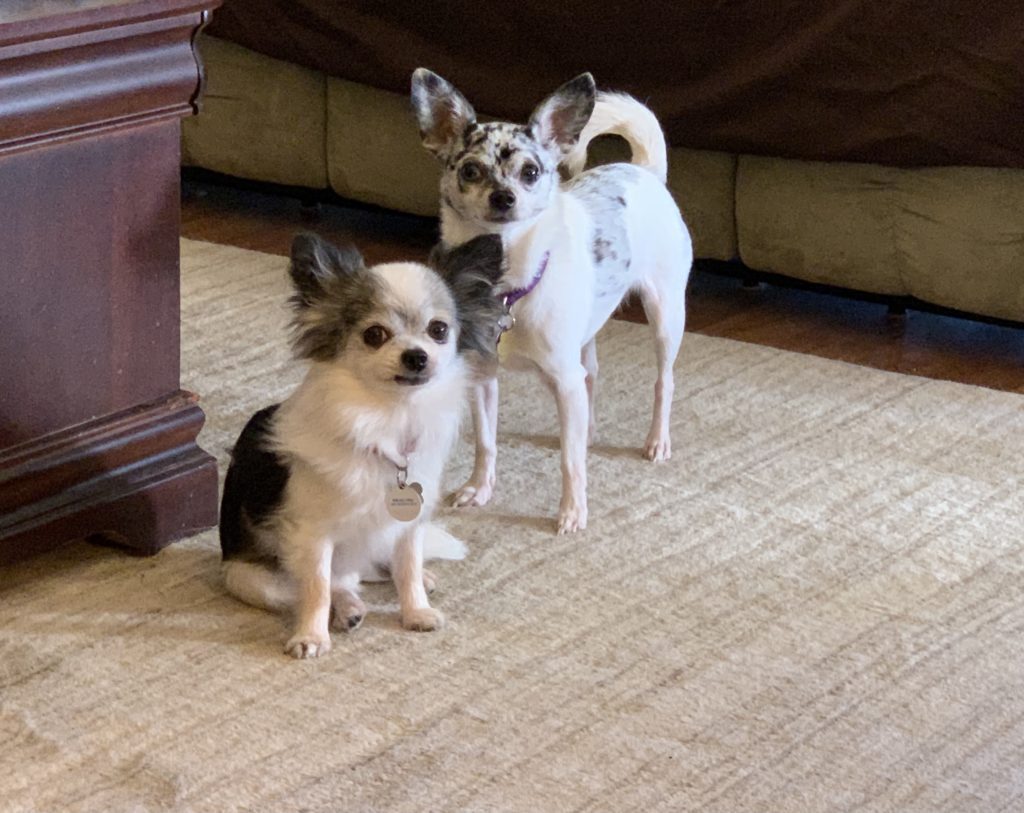
We work on it together most days. How? I put a leash on Remedy so that I have complete control of her. Then I give her a treat. Of course, Cora wants one too, so she will come close. So, now I am engaging with both of them at the same time. I will give Remedy a treat, then Cora a treat. I will do that for a few minutes at a time most days.
This teaches them both that good things happen when I am interacting with both of them at the same time. By doing this it has almost completely stopped. Cora has learned Remedy’s signals and will generally walk away from whatever it is Remedy perceives as “hers”. I am now able to show them both affection at the same time … briefly, then walk away from both of them. Over time with continued management and training, I believe this will eventually no longer be a problem at all.
How to Stop Resource Guarding Of Other Resouces?
Again, management and training. Manage the situation whatever it may be. If it’s toys, don’t let them play with toys in the same room. If it’s food, feed them in separate locations, etc. Then train them in a controlled environment and show them that good things happen when they “share” their toys, food, and treats. Use this same pattern for whatever it is that your Chihuahua(s) guard as a precious and valuable resource.
Conclusion:
Resource guarding is a behavior issue that needs to be addressed immediately. Until you find the cause and begin changing the behavior manage each situation in order to avoid a confrontation. The longer you allow it to occur the more difficult it will be to change the behavior.
If non of the above suggestions help or if you need help you may need to find an animal behaviorist to help. You just might find that an animal behaviorist is not as expensive as you thought. And it is an investment in your family’s happiness and a peaceful home that is well worth the money. To help with that just click the button below to find one near you.
Further Reading and Sources
Wolves Range And Territory
Alpha Wolf, What Does It Mean And Should It Still Be Used.
How To Train A Chihuahua E-Book From Owner of ChiChis And Me
Anyone can teach you how to train a dog, only an expert in the Chihuahua breed can teach you how to train a Chihuahua. Training a Chihuahua is not like training any other dog breed. It’s not just about size. This book makes it easy and fun to train your Chihuahua the basics and gives you the tools you need to train them beyond the basics. Even to correct unwanted behaviors. Download to any device. Only $9.95
